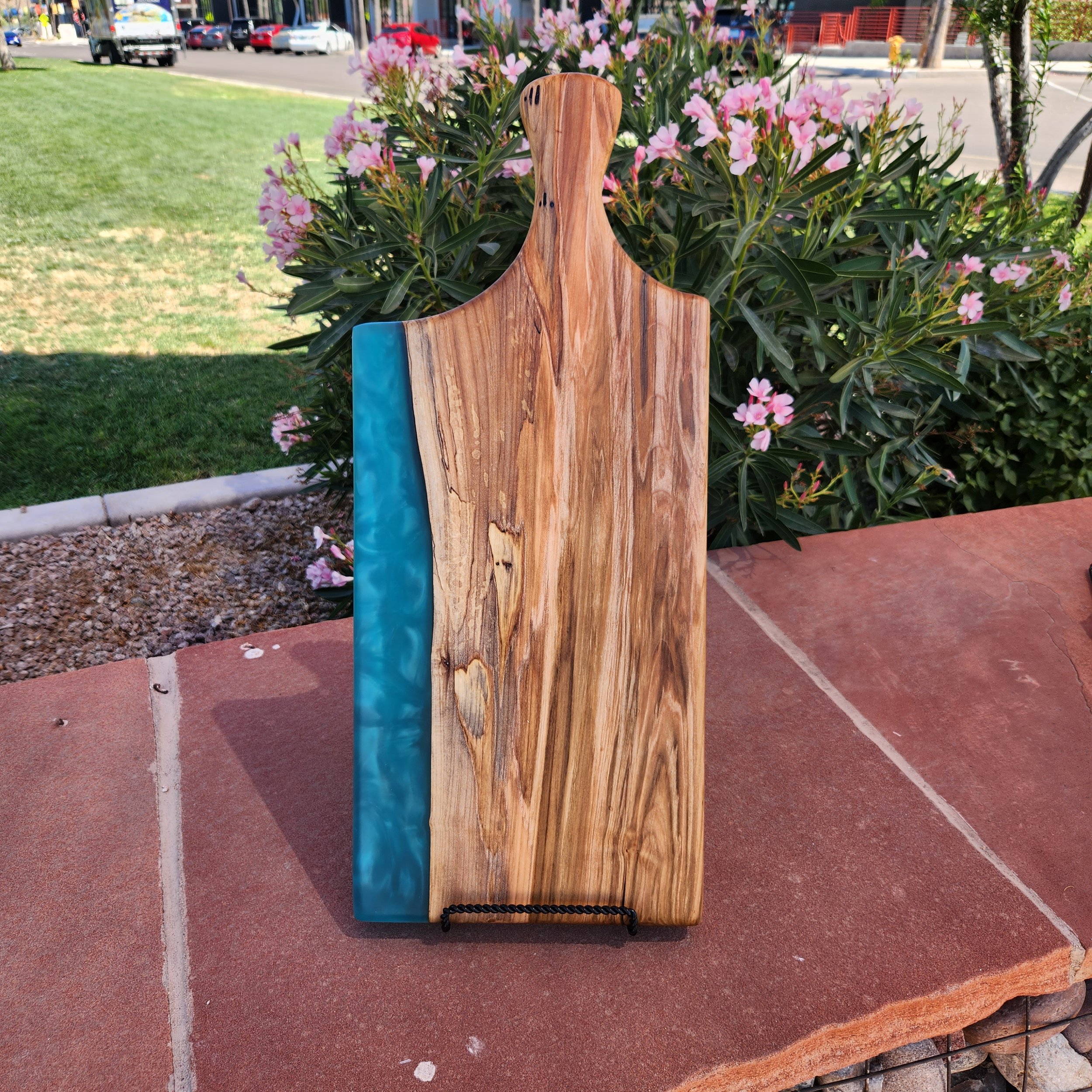Best Woods for Charcuterie Boards
Choosing the right wood is crucial for crafting a beautiful and durable charcuterie board that matches your personal style. If you're planning to incorporate epoxy resin, the right wood can elevate your design and ensure longevity. Here’s a quick guide to the best woods for your epoxy charcuterie board.
Maple Charcuterie Board
Maple is widely loved for its light color, smooth grain, and strength. It’s a fantastic choice for charcuterie boards because it’s hard, durable, and food-safe. Its neutral tone allows the beauty of the food to stand out, and when combined with epoxy resin, it creates a striking contrast, making the board pop.
Walnut Charcuterie Board
For those who want something with more depth and richness, walnut is a go-to. Its dark, rich tones are elegant and timeless. Walnut’s smooth grain and durability make it a high-end choice, and it looks absolutely stunning with epoxy, especially with vibrant resin colors. If you're aiming for a luxurious look, walnut will not disappoint!
Cherry Charcuterie Board
Cherry wood offers warmth and sophistication with its reddish hue that deepens over time. Though a bit softer than maple and walnut, cherry is still a strong and reliable option for charcuterie boards. Paired with epoxy resin, cherry’s fine grain can create intricate and stunning designs. Its warmth adds a welcoming touch to any table setting!
Mesquite Charcuterie Board
Mesquite is an incredibly strong and durable wood with a rustic charm. It’s highly resistant to cracking, which makes it ideal for charcuterie boards that will see a lot of use. Mesquite has a deep, reddish-brown color and a unique grain pattern. It’s perfect for rustic or Southwestern-style boards.
Carob Charcuterie Board
Carob wood, though less common, offers a truly unique grain with beautiful dark streaks and a warm, reddish-brown color. It’s a durable hardwood that holds up well to frequent use. If you’re looking to create a one-of-a-kind epoxy charcuterie board, carob’s distinctive grain will make your project stand out. It’s great for anyone seeking something a little different yet incredibly stylish.
Olive Charcuterie Board
Known for its intricate swirling grain and variety of colors, olive wood is an exceptional choice for charcuterie boards. It’s highly durable, resistant to bacteria, and naturally rich in color. When used with epoxy, olive wood creates a beautiful balance of natural warmth and artistic flair. The intricate grain patterns make every board unique, offering a high-end, handcrafted appeal.
There are Some Woods to Avoid
Certain woods are not ideal for charcuterie boards due to their softness, porosity, or potential toxicity. Pine and other softwoods, for example, are too soft and can dent easily, making them less durable and prone to absorbing bacteria. Cedar, while aromatic, contains oils that can transfer unwanted flavors to food and may cause allergic reactions in some people. Oak, despite being a hardwood, has a coarse, porous grain that can trap food particles and bacteria, making it less sanitary for food use. It's essential to choose hardwoods that are non-porous, durable, and food-safe for the best results.
Conclusion
Choosing the right wood for your charcuterie board can make all the difference, especially when paired with epoxy. In general, hardwoods are the best choice for charcuterie boards and cutting boards. The choice of hardwood for a charcuterie board should reflect your personal aesthetic, as each wood brings its own unique character. Your wood selection should complement both your design vision and the setting where the board will be showcased.






